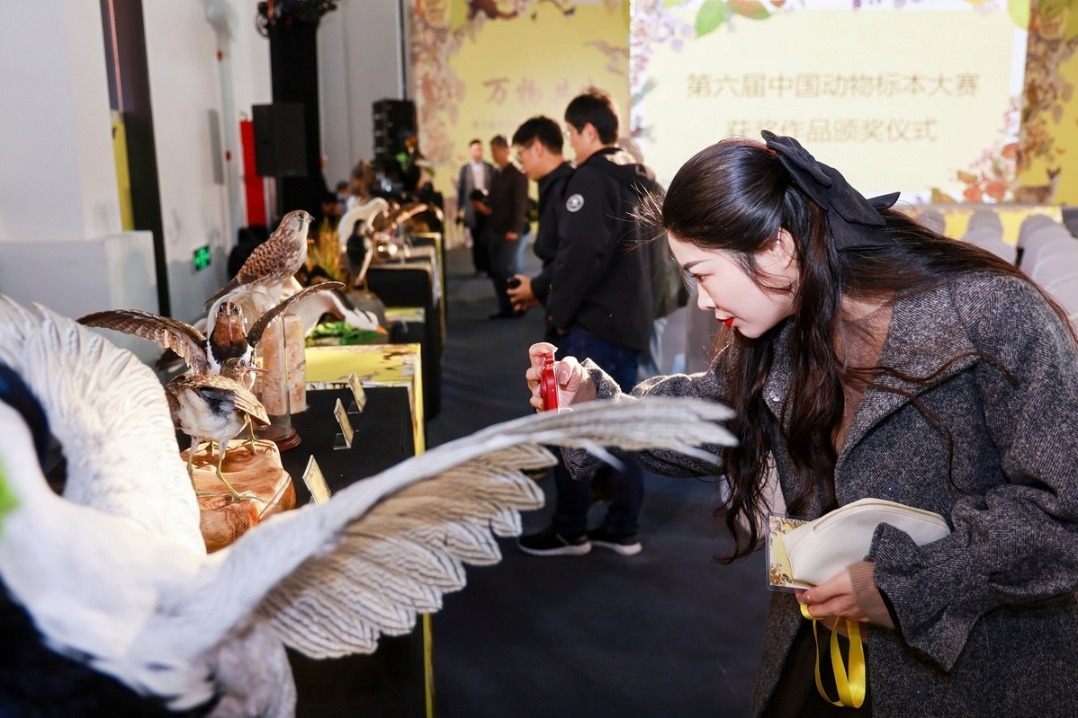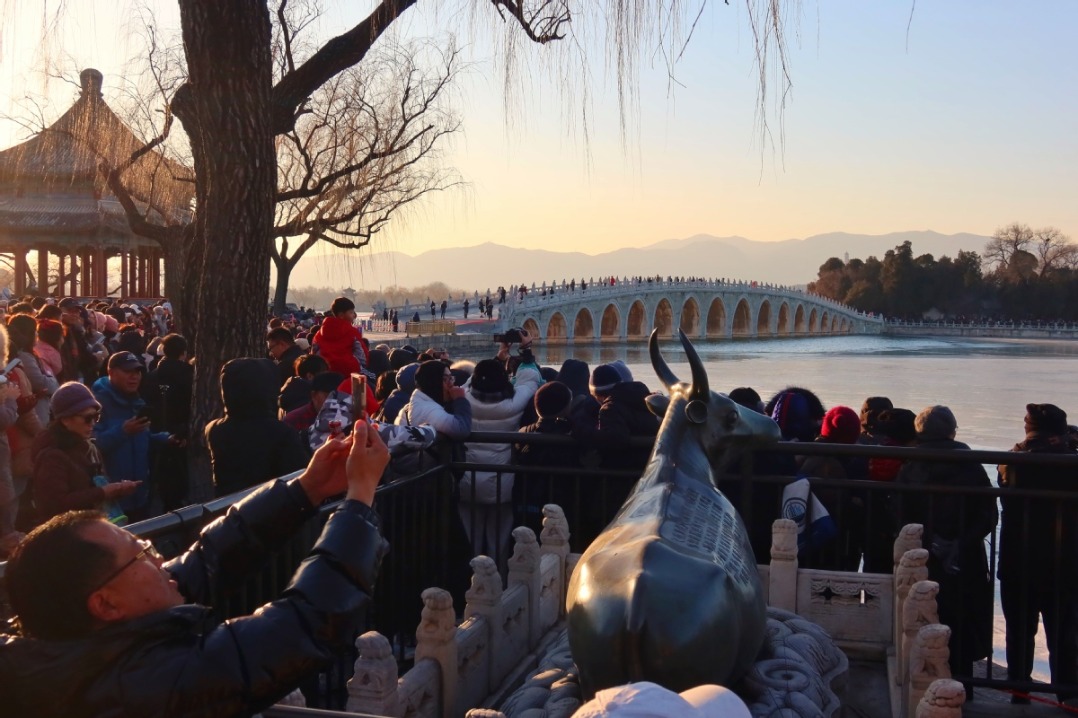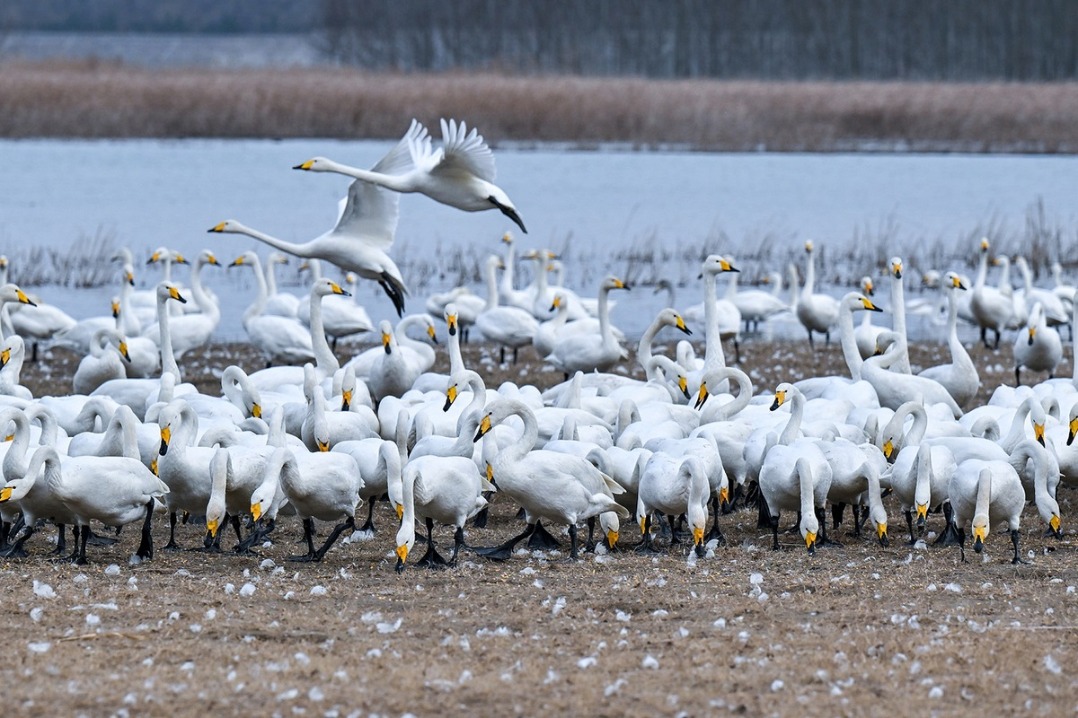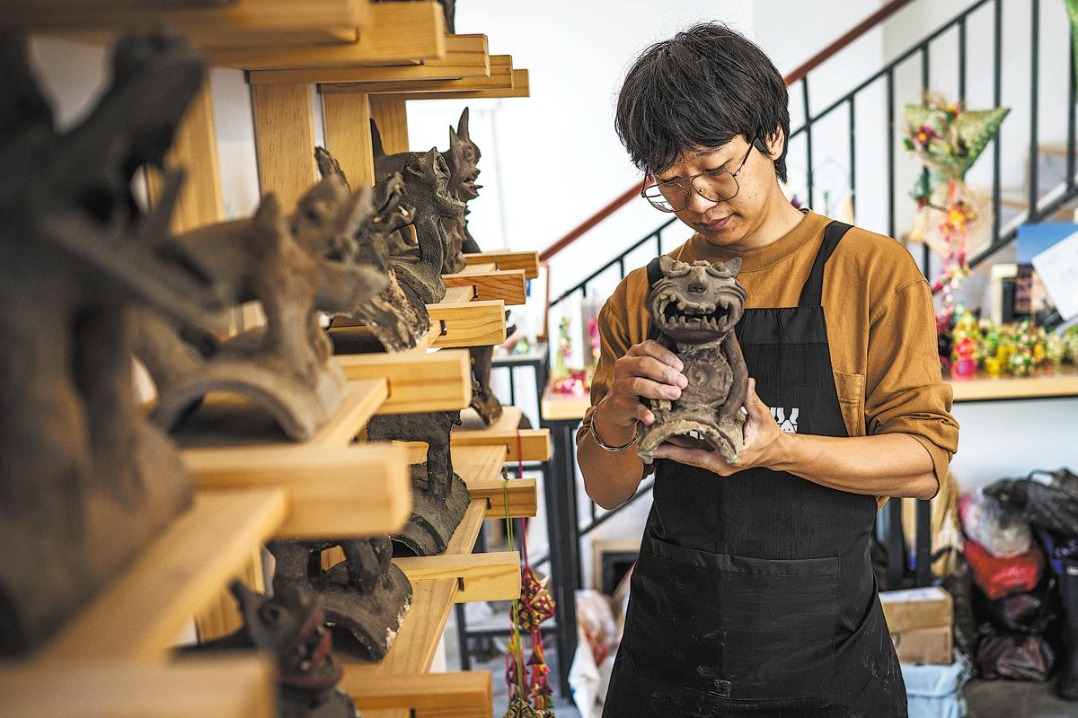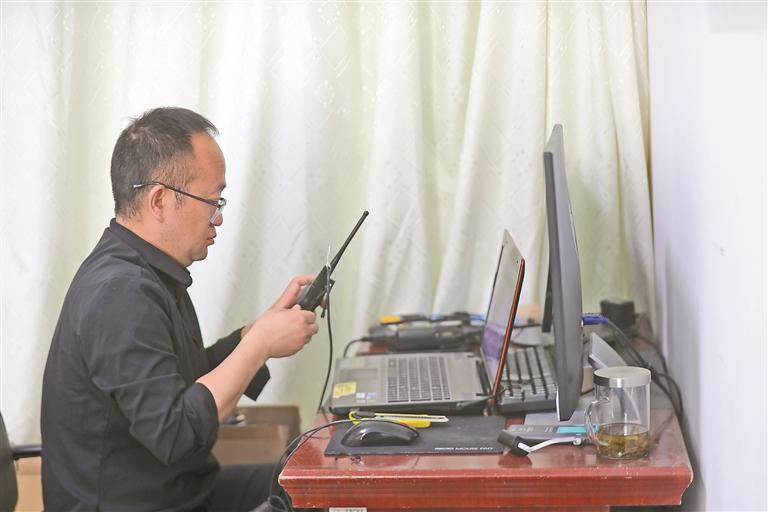Captive-bred alligators released into the wild


Eighty-four captive-bred Chinese alligators from the Anhui Chinese Alligator National Nature Reserve were released into the wilderness of the reserve on Thursday, marking the start of this year's monthlong alligator release season.
This year is the end of a five-year plan for the release of Chinese alligators to boost their population in the wild. It is the 19th release season at the reserve, and the total number of released captive-bred Chinese alligators in Anhui will reach 1,608 this month.
In the early 2000s, the population of Chinese alligators in the wild was extremely low. Field surveys showed there were perhaps fewer than 200 of them, putting them in critically endangered status, according to the International Union for Conservation of Nature.
In 2001, the State Forestry Administration launched the Chinese Alligator Protection and Release Project, which aimed to release captive-bred Chinese alligators into the wild in an effort to gradually increase their wild population.
From 2003 to 2018, the alligator reserve carried out 14 relocation projects, releasing 108 alligators. In 2019, based on the previous experience, a five-year release plan for 1,500 alligators was launched. From 2019 to last year, 1,300 artificially bred Chinese alligators were released.
The Chinese alligator is a critically endangered and first-class national protected wild animal in China. It is mainly found in the counties of Jingxian, Langxi, Guangde and Nanling, and Xuanzhou district of Xuancheng city in southeast Anhui province.
"In recent years, the number of wild Chinese alligators has been increasing, and their distribution is gradually expanding," said Sun Siqing, a researcher with the Anhui Chinese Alligator National Nature Reserve Administration. "The vast majority of released Chinese alligators have adapted to the wild environment and achieved natural breeding."
He said that during a field survey in 2021, Chinese alligators in the wild laid 14 litters of 320 eggs and hatched 137 young. Last year, they laid 602 eggs in 26 litters, producing 372 hatchlings.
Zhou Yongkang, a researcher with the administration, said the released alligators have a certain ratio of male to female, are in good health, and are distant relatives and with rich genetic diversity to ensure natural breeding and genetic exchanges.
The reserve has recorded detailed genetic information for each released alligator, equipped them with solar-powered satellite tracking devices, and established a database of wild released populations.
In the future, the reserve will continue to focus on the protection of the existing wild population and the restoration of the habitat to help recover the population of Chinese alligators in the wild.
- Shanxi ends province-wide blanket fireworks ban
- Audit: China fixes bulk of fiscal problems tied to 2024 budget
- China reports major gains in circular economy
- Chinese lawmakers review draft revision to banking supervision and regulation law
- Top legislature to study draft laws on environment, ethnic unity, national development planning
- Administrative organs must secure people's interests: senior judge

















